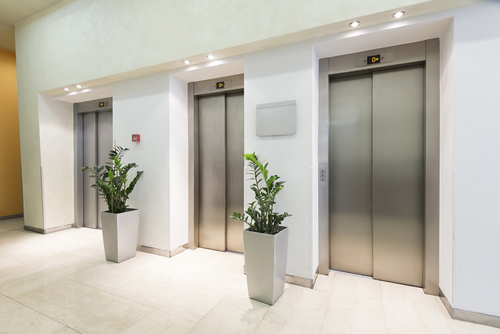
When I visited a resort casino in my region, I noticed it added touchless features to its elevators, which bring guests from the parking garage to the casino level.
A sticker on the wall in the garage’s elevator lobby instructs visitors to wave their hands near a small black box near the buttons to call for an elevator. Moving a hand up would request an elevator going up, while moving a hand down would call for one going down. These are known as hand gestures.
Inside the elevator, a sticker tells guests the elevator is voice-activated. Just say “Hey,” the name of the manufacturer, and the floor number. To give feedback on the touchless experience, visitors are asked to scan a QR code with their smartphones.
The Wall Street Journal reported that elevator companies have increasingly been working to be as contact-free as possible since the start of the COVID-19 pandemic, and according to the Association for Computing Machinery (ACM), these touch-free components can easily be added to existing elevators.
Different Types
Facilities managers should know the different ways manufacturers can make their elevators touchless. In addition to hand gestures and voice commands, other types include:
- Hovering fingers: Place fingers near, but not actually on, buttons.
- Foot petals: Use a foot to press on a pedal to tell it what direction or floor to go to.
- Smartphone: Download a specific smartphone app or use Bluetooth by using either a smartphone (to avoid having to download an app) or a device like a fob to make a request.
Whom Is It For?
Touchless elevators can be a solution for many facilities, including educational, retail, offices, hospitals, hotels, and residential buildings, as well as for transportation buildings like airports, railways, subways, and cruise ships.
Additionally, facilities management staff should ensure any touchless components follow Americans with Disabilities Act (ADA) guidelines.
Why?
1. Health
COVID-19 made people more concerned about hygiene, and some have become uncomfortable riding in elevators—and rightfully so because according to the National Institutes of Medicine, “the number of bacteria on an elevator is 40 times more than it on a toilet’s seat,” much of which are found on buttons.
Facilities managers should therefore consider combining touchless with other hygienic measures that include:
- Air purifiers, which are recommended by the American Society of Heating, Refrigerating, and Air-Conditioning Engineers (ASHRAE);
- Disinfecting supplies, which remove bacteria without harming elevator buttons and are recommended by the Centers for Disease Control and Prevention (CDC); and
- Reducing capacity, encouraging the use of stairs, and staggering workday start and end times to reduce crowds in elevator lobbies, which are recommended by experts in a National Public Radio (NPR) article.
2. Increase Physical Security
Facilities managers and security managers should consider one of the following touch-free security solutions:
- Mobile: Credentials are checked with a smartphone.
- Keypad: Enter a passcode or PIN by implementing hovering fingers technology.
- Card readers: Keycards or fobs can be used on card readers.
While cameras on elevators and in elevator lobbies can help identify suspicious individuals, these touch-free solutions can also prevent unauthorized people from accessing the elevator, and those with elevator access can only go to floors they are allowed to be on.
3. Long-Term Money and Energy Savings
A touch-free destination dispatch approach is a great solution for mid- to high-rise buildings with multiple sets of elevators.
- People can make an elevator request with a smartphone upon leaving an office or a room and enter what level they would like to go to.
- To allow for better elevator lobby traffic flow, the system can group people together based on what floor they choose to exit on.
- Based on total passenger weight, the elevator won’t pick up additional people when there is no room to reduce overcrowding and encourage social distancing.
- The American Society of Mechanical Engineers (ASME) says this will cut the number of stops and the total number of elevators being used, thereby reducing power.
- Elevators can enter standby mode when they are not being used, such as on weekends and holidays, which would also reduce power.
Noting all of the above, touchless elevator components can not only increase hygiene but also strengthen your facility’s security while reducing the bottom line through energy savings.
By Corey Sipe,
The post 3 Reasons Your Facility Should Make Its Elevators Touchless appeared first on Facilities Management Advisor.







0 Comments